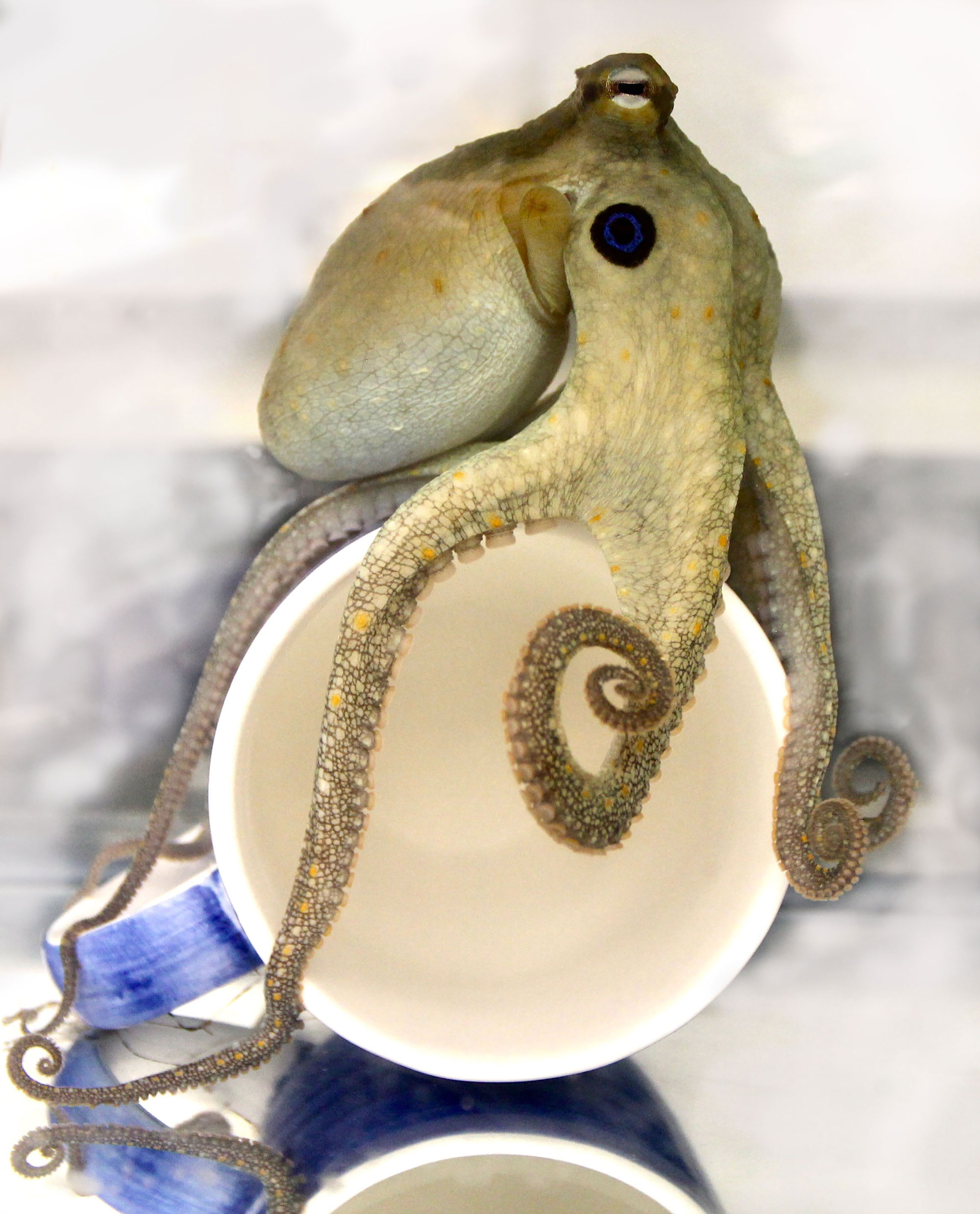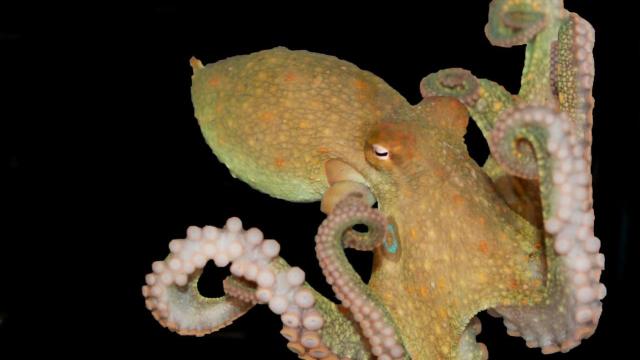Octopuses, with their eight suction-cup-covered tentacles, can taste objects simply by touching them. A team of researchers has finally figured out how these cephalopods are capable of pulling off this remarkable trick.
The octopus is a marvel of the biological world. They’re super smart, excellent problem solvers, and even a bit mischievous. These cephalopods have no choice but to be smart, as they’re forced to raise themselves immediately after birth. They even respond to MDMA in a manner reminiscent of how humans react to this pro-social drug.
Their tentacles, which are strewn with hundreds of suckers, are a big part of their success, as octopuses can literally taste objects simply by touching them. This ability can be very helpful when an octopus has to reach deep into a dark crevice while searching for food or while scouring the seafloor. The ocean is filled with an abundance of nasty, noxious critters, so the ability to discern a bona fide meal from something more harmful is clearly advantageous.

“The strategies they have evolved in order to solve problems in their environment are unique to them and that inspires a great deal of interest from both scientists and non-scientists alike,” Peter Kilian, a co-author of the new study and a biologist from Bellono Lab at Harvard University, said in a release from Harvard. “People are drawn to octopuses and other cephalopods because they are wildly different from most other animals.”
Despite this fascination, our understanding of the chemical and molecular underpinnings of their touch-taste ability is sorely lacking. The new research, published today in Cell, marks an important step in this direction.
Nicholas Bellono, the senior author of the study and a molecular biologist at Harvard, and his colleagues kicked off the project by confirming the touch-taste ability in octopuses. They did so with a California two-spot octopus (Octopus bimaculoides), which in lab tests exhibited different behaviours when its suckers touched prey as opposed to something less appetizing.
While writing an accompanying Leading Edge essay for Cell, Rebecca Tarvin, a biologist from the University of California, Berkeley, took a step back to marvel at this ability and what it means for scientists.
“While we many never know what it’s like to be a bat, or an octopus for that matter, defining the molecular mechanisms that these animals use to explore their environment will aid our imagination,” wrote Tarvin, who’s not affiliated with the new study. “Such major discoveries should also fuel our curiosity for what else remains hidden.”
Indeed, with the touch-taste sense affirmed, the next step for the scientists was to do exactly this: study the suckers at the molecular level. Their search for the unique sensory cells involved in the process led them to discover a distinct population of cells located on the tips of the suckers. These newly detected sensors are now named “chemotactile receptors,” as the team believes they’re responsible for the touch-taste capacity.
As the team demonstrated in subsequent tests, these sensors reacted to molecules that don’t dissolve well in water. Because the molecules do not solubilize well, “they could, for instance, be found on the surface of octopuses’ prey and [whatever the animals touch],” said Bellono in the Harvard release. “So, when the octopus touches a rock versus a crab, now its arm knows, ‘OK, I’m touching a crab [because] I know there’s not only touch but there’s also this sort of taste.”
The team also found a second type of cell — a population of mechanosensory cells — within the suction cups. These cells convert mechanical stimulation into signals the brain can understand as touch, among other senses.
As the authors explain, the octopuses’ chemotactile receptors are capable of both detecting and then discriminating between different chemical signals. The chemically sensitive receptors form discrete ion channel complexes that can pick up specific signals and then transmit electrical signals to the octopus’s nervous system, which are interpreted as taste.
This is important “because it could facilitate complexity in what the octopus senses and also how it can process a range of signals using its semi-autonomous arm nervous system to produce complex behaviours,” said Bellono.
Importantly, this unique signal filtering system is made possible by the octopuses’ distributed nervous system, in which the tentacles can function independently from the brain. Approximately two-thirds of octopus neurons are in their tentacles, which is why a severed arm can still try to reach out and grab stuff. Unsettling, but true.
“These findings demonstrate that the peripherally distributed octopus nervous system is a key site for signal processing and highlight how molecular and anatomical features synergistically evolve to suit an animal’s environmental context,” wrote the authors in the study.
The new research also showed that the octopuses’ receptors are sensitive to terpenoids — a chemical warning shot produced by many marine animals when threatened. In nature, an octopus that suddenly touch-tastes terpenoids could retreat, as it’s a potential sign of poisonous prey.
“The impressive array of…experiments carried out by [the authors] demonstrate that through these two cell types, octopus suckers produce finely tuned electrical signals that likely allow discrimination between stationary and mobile objects and between attractive and aversive substances,” wrote Tarvin.
The authors suspect terpenoids are one of many other unknown compounds capable of stimulating the octopuses’ chemotactile receptors, and they recommend future research in this area. In addition, they’d like to know if other cephalopods, like squid and cuttlefish, have similar touch-taste capabilities.
“Overall, the findings are an exciting leap in describing the octopus chemotactile sensory system and will generate many new questions about the neurobiology, evolutionary ecology, and behaviour of these intriguing animals,” according to Tarvin.
Indeed, the new study will be of interest to evolutionary biologists, who must now figure out how the touch-taste capacity emerged in the first place. As a possible clue, it could be a classic case of form matching function, in which the octopuses’ body plan eventually led to this capacity. But the opposite could also be true, with the touch-taste ability eventually leading to long, exploratory appendages. Or perhaps it was a combination of the two. Happily, this is not my problem to solve, and I can leave it to the scientists to figure it all out.
